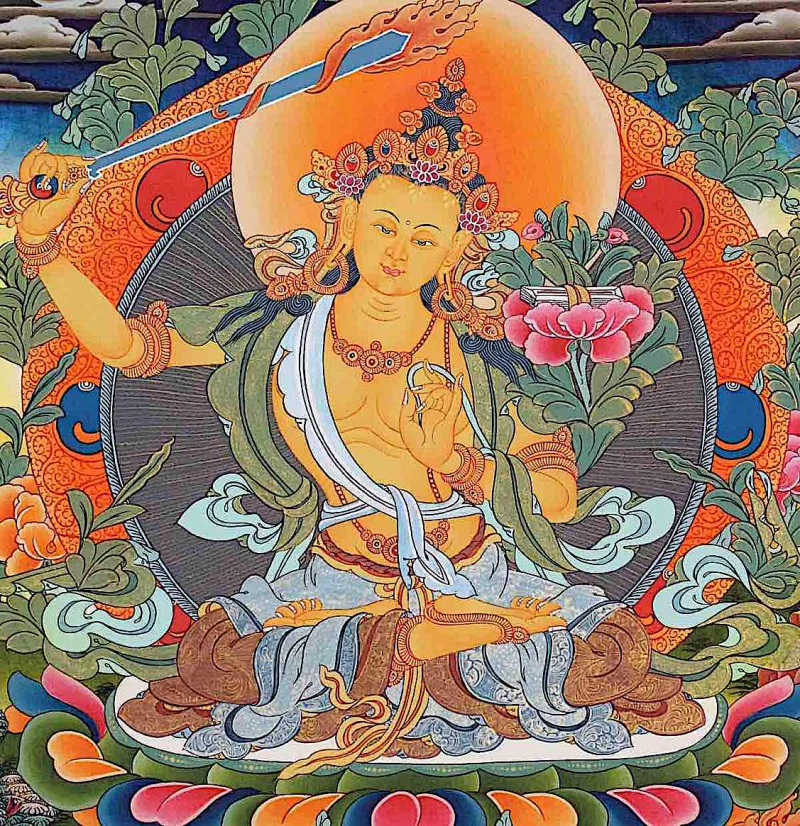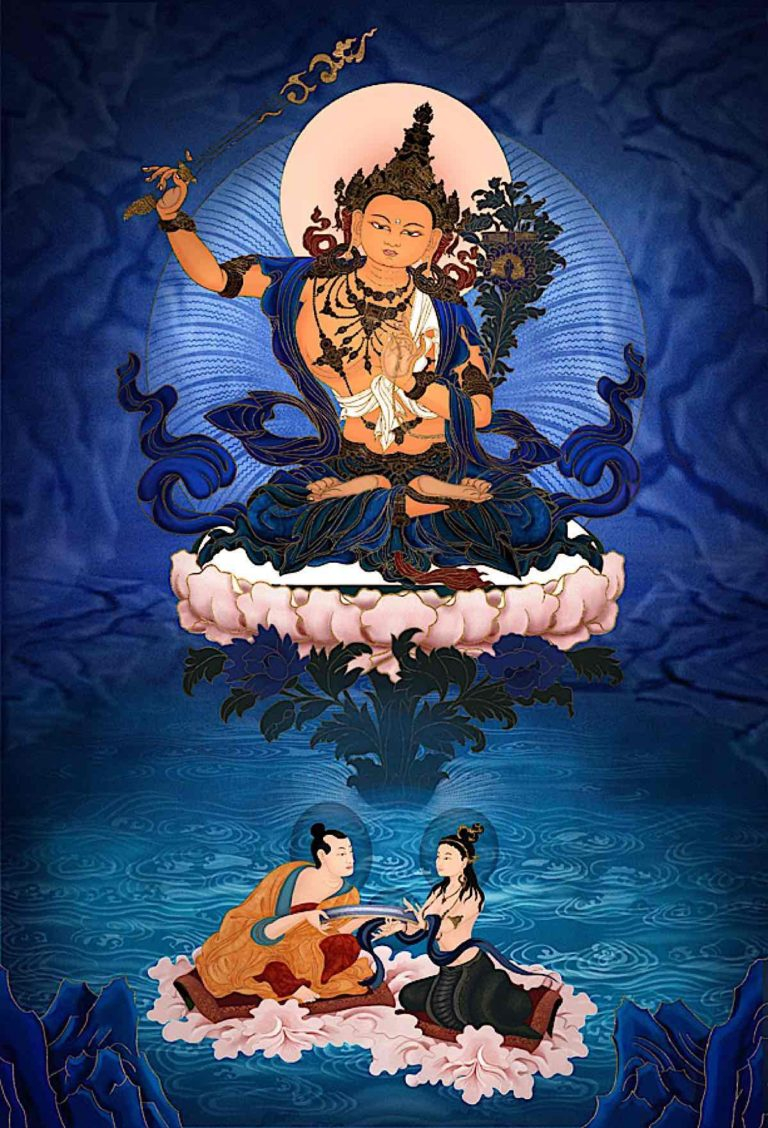Mañjuśrī
Among 8 Great Bodhisattvas in Buddhist Culture, Mañjuśrī is one of the four great Bodhisattvas of Buddhism and The Bodhisattva of Wisdom and Consciousness. Mañjuśrī, also known as Mãnjughoṣa, Vāgīśvara, Wen-shu Shih-li, Monju, and Jam-dpal, holds a prominent role in Buddhist beliefs. Mañjuśrī and Samantabhadra are two bodhisattvas standing in front of Shakyamuni Buddha, commonly known in the world as the Three Saints Flower Adornment, representing the Buddha's wisdom. Let's explore the symbolism and significance of Mañjuśrī across different cultures.
Mañjuśrī, derived from Sanskrit, translates to "He Who Is Noble and Gentle." In Hindu traditions, Mañjuśrī is associated with qualities such as sweetness, splendor, and lordship of speech. Known by various names in different regions, including China, Japan, and Tibet, Mañjuśrī signifies wisdom and consciousness. This Bodhisattva attained Buddhahood a long time ago, his name is Dragon Race Upper Tathagata, and his life span is four hundred and forty thousand years.
Depicted as a youthful figure, Mañjuśrī symbolizes innocence and purity in Buddhist art. Often portrayed holding a vajra sword, he pierces through ignorance and discrimination. Another common attribute is a sutra scroll, representing the Prajnaparamita (perfection of wisdom) writings. In some representations, Mañjuśrī is seen resting on a lotus or riding a lion, symbolizing courage and majesty. Traditional paintings depict his skin color as yellow.
While Manjushri was mentioned in Buddhist sutras as early as AD 250, artistic depictions of him emerged around AD 400. In the eighth century, his cult gained significant popularity in China, leading to the construction of numerous temples on Mount Wu-t'ai in Shansi province. Although considered a celestial Bodhisattva, certain traditions attribute a human past to Mañjuśrī, associating him with various historical figures, including Atīśa, the Tibetan reformer, Chinese emperors, and the monk Vairocana.
Mañjuśrī, the Bodhisattva of Wisdom, plays a vital role in Buddhist traditions across different cultures. Revered for his insight and understanding, Mañjuśrī symbolizes the transcendence of duality and the pursuit of wisdom. Exploring the symbolism and significance of Mañjuśrī provides a deeper understanding of this revered deity in Buddhist philosophy and art.










